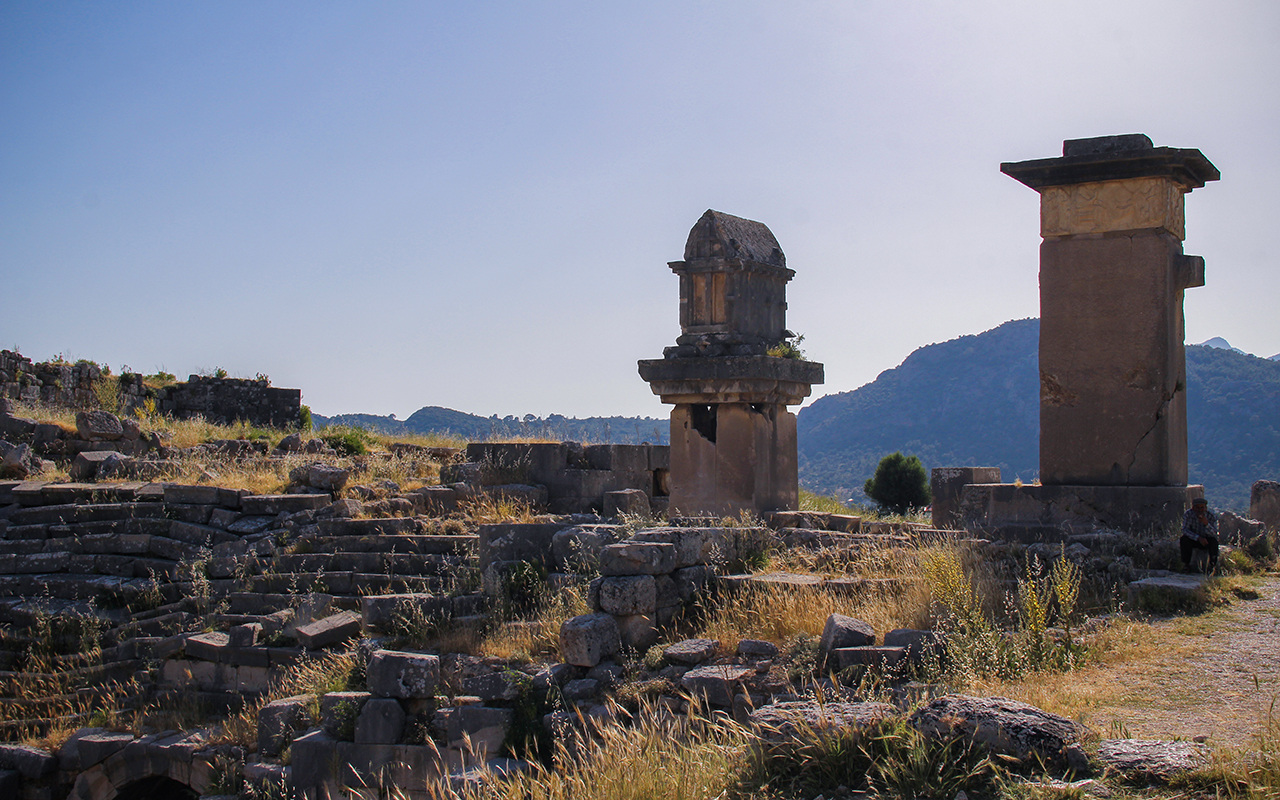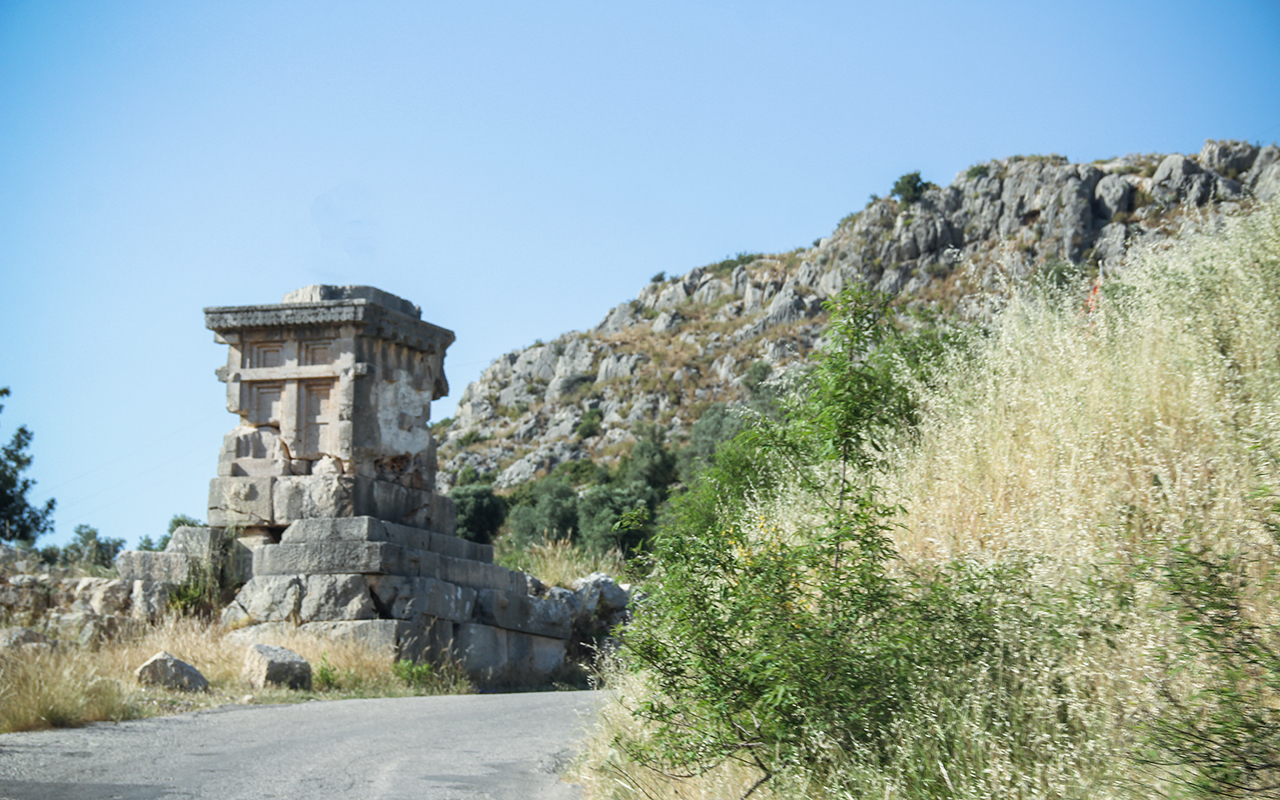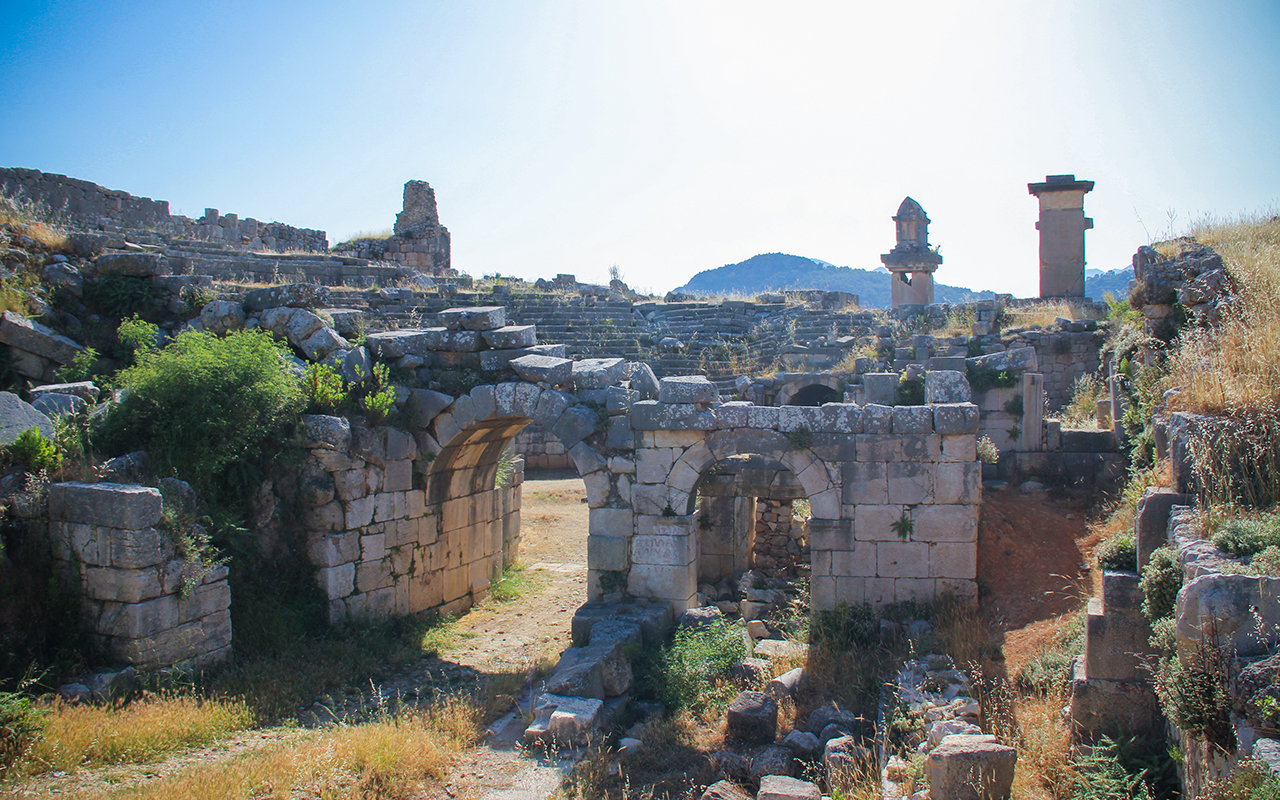If you like to visit ancient cities, Kas is certain to make you very happy. Kas is simply exploding with history. We recommend that visitors also see the ancient city of Xanthos, located on the road between Kas and Fethiye just 45 km from Kas. Perched on two hills overlooking the plains surrounding the Esen River near Kinik Village, Xanthos is the oldest ancient city in Turkey on UNESCO’s world heritage list. Taking visitors on a trip through time, Xanthos is a must-see place for those who like exploring cultural and historic places.
The history of Xanthos stretches back to the 8th century BCE. Known as the administrative center of the Lycian League, the city is recorded as Arnna in Lycian inscriptions. Homer mentioned that it participated in the Battle of Troy.
The Ancient City of Xanthos
anthos is located in the heart of tourism, between Fethiye and Kas. Just 30 minutes from Kas and Kalkan, the ancient city of Xanthos, near Kinik Village, is 50 minutes from Fethiye. While it was once a coastal settlement that ships could approach, it is now 8 km from the sea.
The city was first discovered by C. Fellows in 1838. After seeing the ancient city, Fellows took apart the city’s reliefs and pieces and brought them to the Patara Harbor to be taken on a ship to London. Many of the artifacts brought from Xanthos to England are now on display in the British Museum’s Lycian exhibit.
As the administrative center of the Lycian civilization, Xanthos was independent in internal affairs at the time. In external affairs, it worked as one unit with the governments of other member states. According to some sources, Lycia’s parliament, also known as the period’s most democratic league, was in Patara and its capital was Xanthos. The League’s religious center was the city of Letoon, found near Xanthos.
Sources state that Xanthos became the capital and entered a golden age during the 2nd century BCE. It was always valued for its strategic location. Serving as a stage for many governmental power struggles throughout the ages, the city was invaded by the Persians in the 6th century BCE. Later it was attacked by Athenian statesmen Cimon. In the 1st century BCE Roman Brutus invaded the city which proved catastrophic for Xanthos.
What will you see when you visit Xanthos? The city’s acropolis is surrounded by an interesting system of walls. Its steles and rock-cut tombs are some of the Lycian Period’s most important surviving artifacts. Anatolia’s best surviving stone-paved street is also found in Xanthos.
The Roman Period Theater is located to the north of the Lycian acropolis. The most interesting ruins in Xanthos are found to the west of the theater. The ruins you’ll see to the west of the theater include a deceased family found on top of a high monolith and the woman’s body and winged creature found nearby, the Harpy reliefs believed to transport dead souls to the sky, the Lycian Sarcophagus, and Roman Period Agora.
Another of the city’s conquerors was Alexander the Great. After he conquered the city, Lycian culture was quickly lost. Greek became the official language of the city. The title of the region’s biggest city was given to Patara.
The Story of Xanthos
The historical event that introduced Xanthos to the world, also known as ‘The Most Tragic Declaration of Independence’, is one reason that thousands of foreigners visit the city each year. It’s a sad event that makes your hair stand on end just reading about it.
What sets Xanthos apart from other ancient cities is the heart wrenching story that happened here. ‘The Most Tragic Declaration of Independence’, is one reason that thousands oftourists visit the city each year.
In 545 BCE, Xanthos was attacked by the Persian navy. The local population showed great resistance to the attack but as the siege wore on, they realized that their defense wasn’t enough. After realizing that their land was being conquered by the Persians, they burned all the women, children, slaves, and property inside the castle so not a single Xanthosian could be apprehended.
Devoted to their independence, the citizens of Xanthos were completely erased from history. With this tragic story, residents of Xanthos forged an unforgettable piece of history. A similar event happened during the Roman Emperor Brutus’s attack in 42 BCE. Falling under control of the Romans and later subjected to Arab Invasions, the city fell silent.
You can reach the ancient city with the buses running between Fethiye and Kas. If you have your own car, follow the D400 highway from Antalya. You can also reach it with from Kemer or Finike using the coastal road.
Xanthos Entry Fees and Visiting Hours
Address: Kinik Village, Kas, Antalya
Telephone: +90 (242) 238 56 88 Fax: +90 (242) 238 56 87
Visitor Hours:
Summer Season (April 15th-October 2nd) 08:30-19:30
Winter Season (October 3rd – April 14th) 08:30-17:30
Holidays: Open until noon on the first days of religious holidays.
Entry Fee: 14 TL






